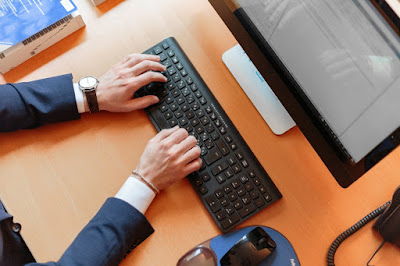Three Common Desktop Problems
As the world practices social distancing, and most people are working from home during the outbreak of COVID-19, desktops have become more important for us than ever. But since there won’t be any IT technicians around you to help out with IT-related issues, it’s best to know how to tackle the most basic ones on your own.
Here are three common desktop problems and their quick fixes to save you from missing any important deadlines:
Computer won’t start
If your computer doesn’t start at all (meaning no lights are blinking, no fans are running, and there’s nothing on the screen), you’re probably facing a power issue. Check the power cable first; is it connected to the power supply and your desktop correctly? If you’re using a power strip or a battery backup, unplug the power cord and plug it directly into a wall socket (or somewhere you’re sure there’s a power supply).
If your computer starts (you hear the fans and see the lights in the CPU blinking) but there is nothing on the screen, check the cables to make sure that your monitor is connected to the CPU and the power supply correctly.
If these don’t work, connect your PC to a different monitor to check if there’s an issue with your current monitor. If the test monitor runs perfectly with your PC, it means your current monitor is damaged and needs repairs.
Windows won’t boot
There are a couple of things you can try if your Windows isn’t booting:
1. Reinstall Windows Recovery Disk
2. Boost into Last Known Good Configuration:
· Select the last known good configuration option from the Advanced Boot Options menu
· Press enter
3. Boost into Safe Mode:
· To do this, press the F8 key repeatedly before the Windows logo appears on your screen
· Select Safe Mood from the Advanced Boot Options Menu
4. Remove Recently Added Hardware:
· Remove any external hardware added to your computer except for your mouse and keyboard
5. Run Startup Repair:
· Insert the original Windows installation discs
· Restart the computer and press any key
· From the options that appear, click on Repair
· Choose your operating system and then click next to continue
· Select Startup Repair at System Recovery Options
· After Startup Repair is completed, restart your computer
If none of these fixes help boost your windows, reach out to us, and our team of experts will make sure that your windows are up and running in no time!
Computer is slow
If your computer has recently started getting slower, you can resolve the issue by removing unwanted files from the drive since it gets slower due to a lack of storage space. Download a good anti-virus software, firewall, and schedule regular spyware scans. This helps in maintaining the health of your PC as well.
Our team of experts at NWA Cell Phone Repair offers computer repair in Fayetteville and Washington County. You can reach us at (479) 595-8388.





Comments
Post a Comment